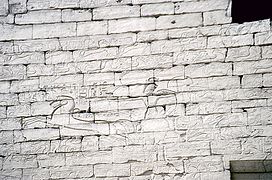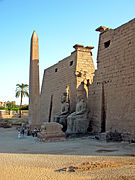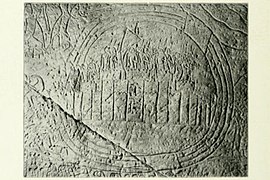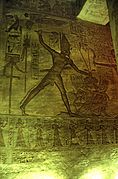|
Kadesh inscriptions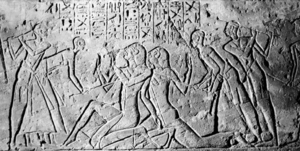 The Kadesh inscriptions or Qadesh inscriptions are a variety of Egyptian hieroglyphic inscriptions describing the Battle of Kadesh (1274 BC). The combined evidence in the form of texts and wall reliefs provide the best documented description of a battle in all of ancient history.[1] The Egyptian version of the battle of Kadesh is recorded in two primary accounts, known as the Bulletin or Report and the Poem which are often placed side by side in the locations they were inscribed. In addition, some reliefs also inscribed in the same location offer pictorial depictions of the battle. Some scholars divide these accounts into three. The Bulletin is repeated seven times and the Poem eight times, spread across temples in Abydos, Temple of Luxor, Karnak, Abu Simbel and the Ramesseum, and two hieratic papyri.[2] PoemThe Poem of Pentaur (pntAwr.t), usually short referred to as the Poem is known from eight inscriptions,[2] and lists the peoples which went to Kadesh as allies of the Hittites. Amongst them are some of the Sea Peoples and many of the other peoples who would later take part in battles of the 12th century BC (see Battle of Kadesh). The Poem has been questioned as actual verse, as opposed to a prose account similar to what other pharaohs had recorded. BulletinThe Bulletin or the Record is itself simply a lengthy caption accompanying the reliefs.[3] Eight copies survive today on the temples at Abydos, Karnak, Luxor and Abu Simbel, with reliefs depicting the battle.[2] Other inscriptionsIn addition to these lengthy presentations, there are also numerous small captions used to point out various elements of the battle. Outside of the inscriptions, a hieratic copy of the Poem is preserved in the Raifet-Sallier papyrus, of which the first page is lost, the second page ("Papyrus Raifet") is in the Louvre and the third page ("Papyrus Sallier III") is in the British Museum.[4][5] However, this is "an inaccurate copy of the whole text".[6] Cuneiform references to the battle have been found at Hattusa, including a letter from Ramesses to Hattusili III written in response to a scoffing complaint by Hattusili about the pharaoh's victorious depiction of the battle.[7] However, no annals have been discovered that might describe it as part of a campaign. Instead, there are various references made to it in the context of other events. CopiesPoem
Bulletin
Reliefs
Gallery
See alsoReferences
Bibliography
External websites |
Portal di Ensiklopedia Dunia

